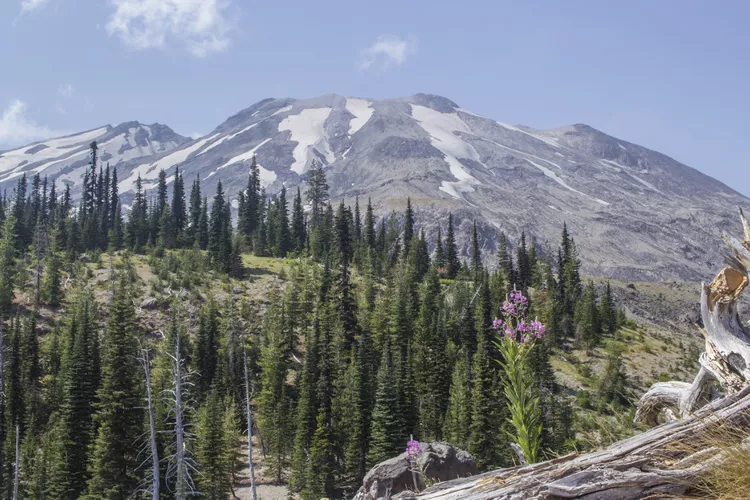Summary
There are several Mount St. Helens visitor centers located along State Highway 504, which is the main route into the National Volcanic Monument. Each offers different educational exhibits and viewing opportunities, along with shops, refreshments, and restrooms. Most provide access to trails.
The best way to experience the mountain is to spend at least an entire day driving east on Highway 504, stopping at visitor centers, trails, and viewpoints along the way. The extent of the devastation, evident even decades after the 1980 eruption, unfolds with each mile. However, you will also witness nature’s remarkable recovery, featuring diverse plants and animals.
If your time is limited during your Mount St. Helens visit, the visitor center at Silver Lake is conveniently located just off Interstate 5 and offers excellent exhibits along with a compelling film. Consequently, if you can only stop at a single visitor center while driving in, choose the Johnston Ridge Observatory.
Note: Volcano viewing is highly dependent upon the weather. Therefore, even if conditions do not permit a view of Mount St. Helens itself, exploring the blast zone, visiting the centers, and hiking along interpretive trails can still be an unforgettable experience.
Mount St. Helens Visitor Center at Silver Lake

The Mount St. Helens Visitor Center at Silver Lake, positioned five miles from the I-5 exit at Castle Rock, presents a powerful and moving 16-minute film detailing the events surrounding the May 18, 1980 eruption. Exhibits offer insights about volcanoes, comparing the Mount St. Helens eruption with others of historic significance. Adjacent to the center is the half-mile Silver Lake Wetlands Trail, where you can learn about the formation of Silver Lake and observe local flora and fauna. On clear days, Mount St. Helens can be seen in the distance. This center also features a shop for maps and gifts, with staff readily available to answer your questions.
Charles W. Bingham Forest Learning Center

The Charles W. Bingham Forest Learning Center at Mount St. Helens is a collaborative initiative between Weyerhaeuser, the Washington Department of Transportation, and the Rocky Mountain Elk Foundation. Visitors will gain insights into forests and forestry management. A substantial portion of the forested land in the blast zone was owned by Weyerhaeuser; thus, exhibits at the center address the timber salvage and forest recovery activities undertaken since the eruption. Additional attractions include multimedia presentations, an elk viewpoint, a volcano-themed playground, a forest trail, and a gift shop.
Please note, the Charles W. Bingham Forest Learning Center is closed during the winter.
Science Learning Center

The Coldwater Ridge Visitor Center was permanently closed on November 5, 2007. In 2012, the facility reopened as the Mount St. Helens Science Learning Center and now provides field trips and educational programs, making it available for meetings and conferences. Programs for kids, adults, and families are presented by the Mount St. Helens Institute, which operates the Science and Learning Center in partnership with the USDA Forest Service. These programs include guided hiking and climbing trips as well as hands-on, outdoor geology or biology learning experiences.
Johnston Ridge Observatory

Geology and biology take center stage at the Johnston Ridge Observatory within Mount St. Helens National Volcanic Monument. Operated by the U.S. Forestry Service, this observatory is the visitor center closest to the volcano and provides breathtaking views into the crater as well as the altered landscape surrounding the eruption. A wide-screen theater presentation concludes with drapes being opened to reveal a stunning view through a windowed-wall. Exhibits guide visitors through Mount St. Helens’ geologic history, allowing them to read eyewitness accounts of the eruption and its aftermath.
Please note, the Johnston Ridge Observatory is closed during the winter.





